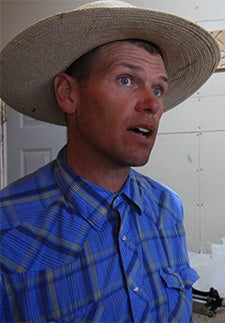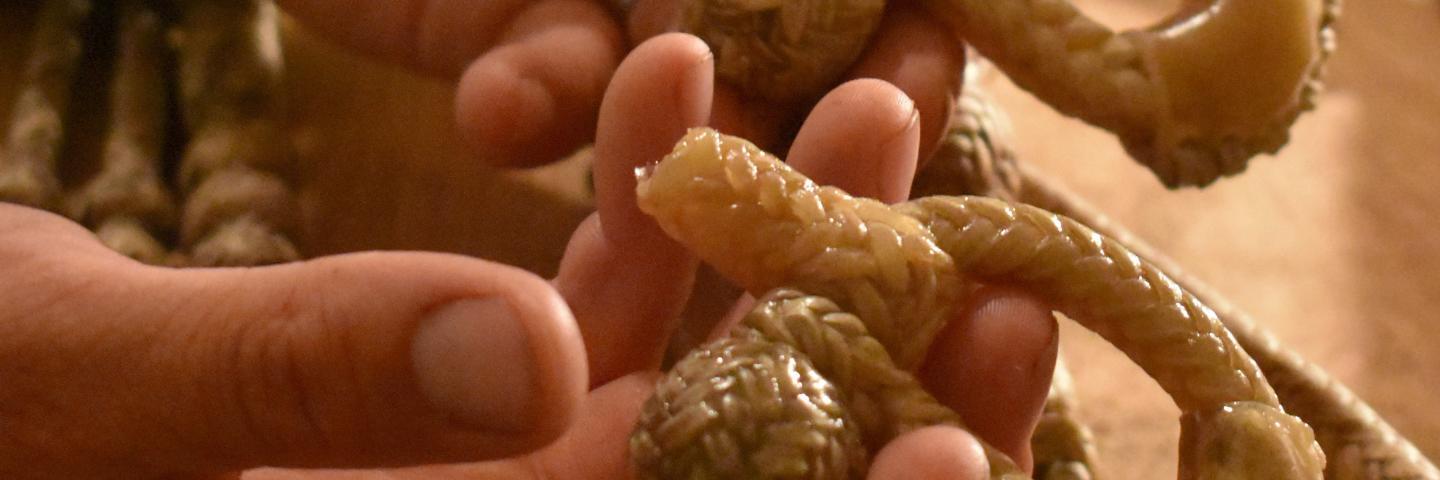 | Traditional skill/art/craft: Rawhide Braiding Years Awarded: 2016 Contact Information: Phone: (775)385-6306 Email: jackarmstrong04@gmail.com |
ARTIST BIOGRAPHY
I moved from Southern California to Oregon as a young child and lived on a small family cattle and horse ranch in Klamath Falls. After high school I traveled across Idaho, Nevada and California working on a variety of horse and cattle ranches. As a result of my travels, I found my wife and we had two children and decided to move back to Oregon and put down roots and raise our family. By making a living as a working cowboy most of my life, I have not only built the gear that I use on a day-to-day basis performing my job, but I have also had the privilege of producing items that other working cowboys are able to utilize on a daily basis in their employment, which is very rewarding to me on a personal level.
APPRENTICE BIOGRAPHY - JC Sykes 2016
JC Sykes is from Montana, but lives in Lakeview Oregon, with his wife and two children where they raise horses. Sykes works as a cowboy for a few of the ranches surrounding the area and competes in events across the Western states. He began rawhide braiding during his first full-time job as a cowboy and learned from Rich Halquist who taught him how to rawhide braid and continued on the tradition to him. Sykes loves to see people using his braids and getting to challenge himself during his projects. His goal is to be able to enter his work in art shows and be able to pass on the traditions to his children.
Q+A WITH THE MENTOR ARTIST
Describe your traditional art.
Body
Rawhide braiding has been around since mankind’s beginning. It has evolved from necessity to functioning art. I began braiding 20 years ago and still enjoy it today. I enjoy teaching this tradition to ensure it is not a dying art.
How did you come to learn this tradition?
Body
I first learned to braid with nylon when I couldn't afford to purchase braided gear. Traveling around the northwest working on ranches, I had opportunity to learn different techniques from different cowboys. I have also attended several workshops all across the US trying to better my craft.
Why is this cultural tradition important to your community?
Body
The ranching tradition has deep roots in Lake County. Using braided rawhide gear as tools to both train horses and perform tasks in the ranching industry, doing a cowboy’s job on a day to day basis has been ongoing for many centuries. In the beginning, rawhide braiding was very basic and crude and in the last 100 years it has evolved. It is still useful in a similar fashion but more artistic. Years ago, most braiders used nothing more than a pocket knife and a block of wood for a guide to cut all of their strings. Currently, more modern, precise, and adjustable tools have been designed and created that cut finer and more consistent strings, which has led to more intricately braided products. Although the materials and the practices have not necessarily changed, they have been improved upon with smaller and finer strings and the ability to dye the rawhide has introduced the capability to create pleasing color patterns. This has resulted in elevating this age-old tradition into a more modern art form.
Experience/Honors
Body
2015, Red Bluff Bull and Gelding Sale, Art Show, Working gear: First place, “16 Strand Rawhide Quirt”
2016, Red Bluff Bull and Gelding Sale, Art Show—Winner
Traditional Cowboy Arts Association, Emerging Artists competition, Mesa, AZ.
Presentation on Rawhide Braiding, Vaquero Show, Santa Ynez, CA.
Visit OFN's Culture Keepers Roster to learn more about the artist.
Traditional Arts Apprenticeship Program
More OFN programs
OFN main page
